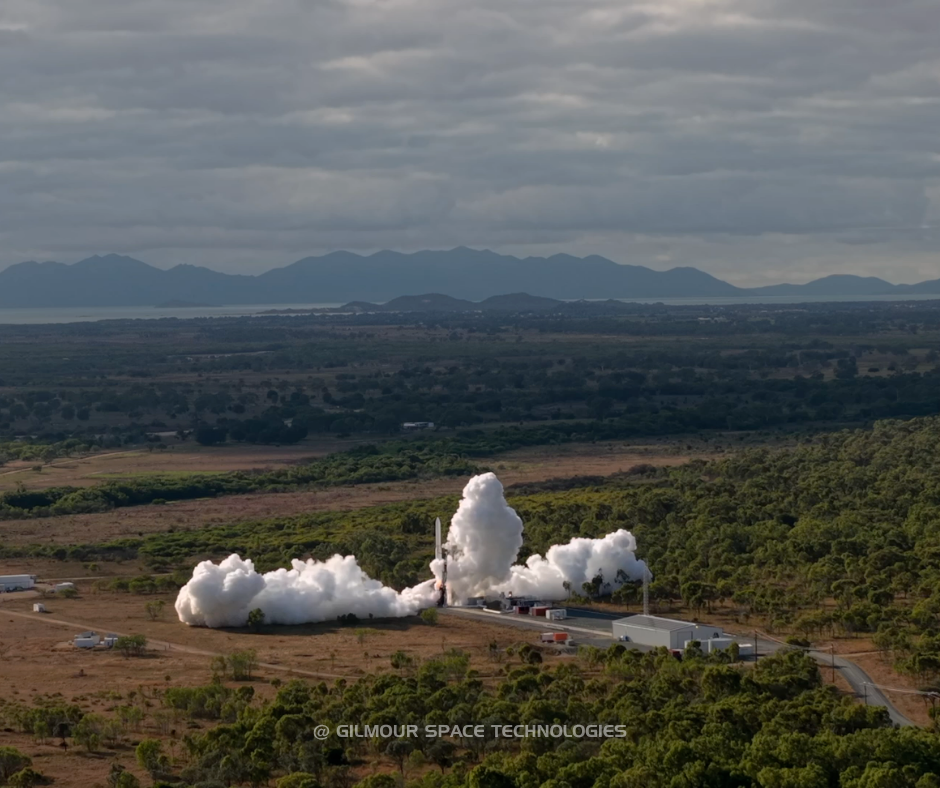What’s happening?
On 30 July 2025, the coastal town became the launch site for the first Australian-designed and built orbital rocket, as Gilmour Space Technologies successfully completed the maiden test flight of Eris at the Bowen Orbital Spaceport.
The rocket, 23 metres tall and weighing 30 tonnes, achieved around 14 seconds of powered flight, marking a milestone for Australia’s sovereign launch capability and for Bowen as the home of the country’s first commercial orbital spaceport.
Why it matters
The successful liftoff of Eris represents a giant leap for Australia’s space ambitions, placing Bowen at the forefront of a growing global industry. As Gilmour Space CEO Adam Gilmour noted, “Getting off the pad and into flight is a huge step forward for any new rocket program.”
The flight validated key systems, propulsion technology, and infrastructure, all developed in-house by Gilmour Space. The mission, called TestFlight 1, marks Australia’s formal entry into the club of nations progressing toward independent orbital launch capability.
“Only six nations currently launch to orbit regularly, and just a handful are developing sovereign capability to join them,” Gilmour said. “We’ve now taken a big step toward joining that group.”
Local Impact
Bowen’s role is central to this achievement. The Bowen Orbital Spaceport, developed and operated by Gilmour Space, is now officially a functional launch facility after successfully supporting Australia’s first integrated test of an orbital-class rocket.
The Eris mission brought together over 200 team members and more than 500 Australian suppliers, contributing to the development of the rocket, its subsystems, and the spaceport itself. All major elements, including propulsion, structures, avionics, software, and ground systems, were developed in Australia.
The region also saw the implementation of safe launch procedures, with coordination from stakeholders including the Australian Space Agency, Civil Aviation Safety Authority, Air Services Australia, and maritime authorities.
Most importantly, the launch was safely executed with no injuries and no adverse environmental impacts.
By the numbers:
-
1st Australian-made orbital rocket launched from Australian soil
-
23 metres, 30 tonnes, size and weight of Eris
-
14 seconds of flight, 23 seconds of engine burn
-
200+ staff and 500+ Australian suppliers involved
-
6–8 months until the next test launch from Bowen
Zoom In
The Eris rocket lifted off using hybrid propulsion engines, a unique technology developed by Gilmour Space. The mission marked the first real-world test of the rocket’s integrated systems, propulsion, and the newly licensed Bowen Orbital Spaceport.
Despite the early termination of the flight, key systems performed as expected, including autosequence ignition, thrust, flight software, guidance, navigation and control, as well as range tracking and telemetry. Initial data confirms that the rocket cleared the tower, and the launch site infrastructure remains intact.
“Clearing the tower was a major milestone for our team,” said Gilmour. “It showed that Australia can design, build, and launch rockets right here at home.”
Gilmour Space is now reviewing flight data to determine the cause of the in-flight anomaly and will apply those learnings to the next build, which is already in production.
Zoom Out
TestFlight 1 was the result of years of work, extensive collaboration with regulators, and a national effort to develop Australia’s space launch capability. The goal: provide low-cost, responsive launch services for small satellites, a service in growing demand globally.
The mission demonstrated that Bowen is not just capable of hosting launches but also leading Australia’s future in commercial space operations.
What to look for next?
Gilmour Space plans to launch the next Eris rocket within 6 to 8 months, once analysis from TestFlight 1 is complete. Preparations for TestFlight 2 are already underway, with the Bowen Orbital Spaceport again set to play a key role.



